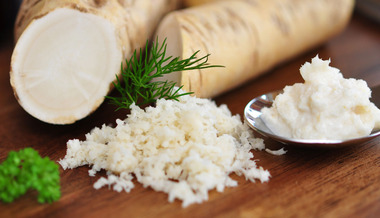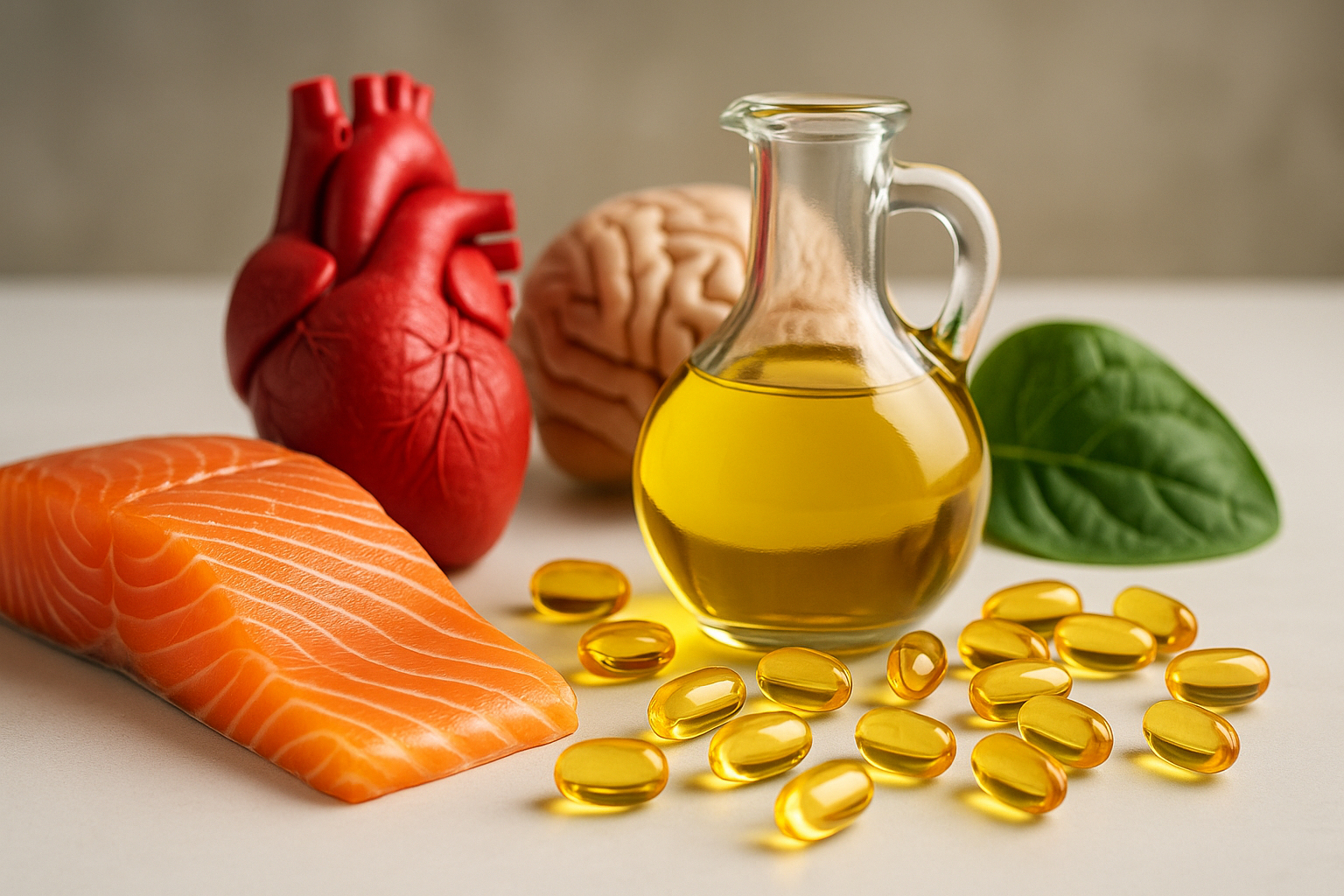
Originally, horseradish probably came from Moldova, from where it was brought and spread to Central Europe by the Slavic peoples. Today it grows wild in Central Europe. Even monastic medicine valued the root for treating infections of the upper respiratory tract. What is special about horseradish is that it is said to kill bacteria, viruses, yeasts and fungi. Recent scientific studies have confirmed this.
Horseradish, mordant, horseradish, merch: Horseradish has many names, and it has been known for thousands of years. It already appears on a Pompeian mural from Roman antiquity - and as we all know, the city in Campania on the Gulf of Naples, like Herculaneum, Stabiae and Oplontis, was buried during the eruption of Vesuvius in 79 AD. The Roman politician Cato also dealt with this plant in detail in his treatises on agriculture "De agri cultura". Originally, horseradish probably came from Moldavia, from where it was brought to Central Europe and spread by the Slavic peoples. Today it grows wild in Central Europe. In eastern Russia and the Ukraine, it still exists in its wild form. In Germany, horseradish is said to have been cultivated only since the Middle Ages. It is said to have been used first as a medicinal plant and then as a spice.
If you have ever wondered about the origin of the strange name "horseradish", here is the solution: according to the German botanist Heinrich Marzell, horseradish actually has something to do with the sea. For him, horseradish is "the radish that came across the sea" - and indeed the vegetable also grows on seashores. Marzell considers the opinion that horseradish originated from Mährrettich (from "Mähre" = old horse) and thus corresponds to the English "horseradish" or the French "radis de cheval" to be a "learned folk etymology".
Horseradish survives up to -50 degrees
Horseradish grows as a perennial herbaceous plant and reaches heights of 50 to 120 (rarely up to 200) centimetres. The hardy root vegetable can withstand temperatures of up to -50 degrees. Especially in horseradish-growing regions, dishes with horseradish are part of everyday life. Horseradish grows wild on the edges of damp meadows, along streams and riverbanks. In Austria, the traditional cultivation areas for horseradish are in the southern and eastern Styrian districts of Hartberg-Fürstenfeld, Deutschlandsberg, Voitsberg, Leibnitz, Weiz, Graz-Umgebung and Südoststeiermark. In France, in Alsace, there are about 20 hectares of cultivation area today, in the USA the plant is found wild and in cultivation. South Africa is also familiar with horseradish cultivation.
In Germany, the centres of horseradish cultivation are the Spreewald, Fautenbach in Baden, the horseradish village of Urloffen (which has its own horseradish song) and Baiersdorf in Franconia, where there is also a horseradish museum. In the museum, which is the only one of its kind in the world, the visitor receives comprehensive information about horseradish, from earlier production to modern times. In addition to the uses of horseradish, the history of cultivation and processing is shown and information is given about the pungency and the essential substances and vitamins contained in horseradish.
The "plant penicillin" helps with urinary tract infections
In Europe, horseradish has only been cultivated since the Middle Ages - but it quickly gained fame: even monastic medicine valued the root for treating infections of the upper respiratory tract. The special thing about horseradish is that it is supposed to kill bacteria, viruses, yeasts and fungi. Recent scientific research has confirmed this! This is still true today. Horseradish is versatile and can be used both internally and externally.
For colds, urinary tract infections or to support the immune system, the so-called "herbal penicillin" has already proven its worth. People in the Middle Ages already benefited from its effect when they discovered that its pungency made food more digestible. Horseradish stimulates the bile and the stomach, which has a positive effect on digestion, and it is also an important and popular source of vitamin C in winter. In addition, the oil extracted from the root helps with muscle pain and cramps as well as with loss of appetite or sluggish digestion.
The plant has a decongestant effect
Horseradish, for example, can also help the immune system fight off cold viruses and thus prevent infection. On the other hand, if you already have a cold, you can use the pungent root to alleviate several accompanying symptoms and ensure a speedy recovery. Speaking of colds and flu: the medicinal plant is particularly effective for diseases of the upper respiratory tract, such as sinusitis, colds, coughs and painful inflammation of the throat. The plant also has a spasmolytic effect, calms the bronchial tubes and can relieve an irritating cough.
However, the motto with horseradish is: less is more, too much is rather counterproductive! Isolated and undiluted, the oil of horseradish is poisonous! To avoid irritation, the content of extracted mustard oil should not exceed two percent. In the case of stomach or intestinal ulcers, it should not be used at all. And: Hot, hotter, horseradish: Many people feel like laughing at the thought of horseradish and certainly not when eating it.
Fresh roots should be used quickly
When used correctly, the fat-soluble mustard oils are well absorbed by the body. They are very reactive and can bind to proteins. This inhibits the activity of the enzymes of attacking bacteria. The flavonoids they contain also have an antibiotic effect, which can, for example, inhibit the growth of the soil bacterium Bacillus subtilis, the intestinal bacterium Escherichia coli and the pus pathogen Staphylococcus aureus.
If you like, you can buy a fresh root and prepare it yourself for medicinal use. To do this, grate the horseradish and use it quickly so that as many valuable substances as possible are retained. If you don't use the whole root, you can wrap it in a damp kitchen towel and store it in the refrigerator. The special root can also be taken in the form of tablets, capsules or drops.
* This text may contain translation errors as the translation was performed by an online translation tool.










